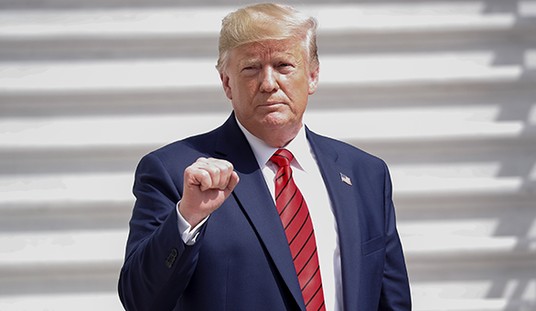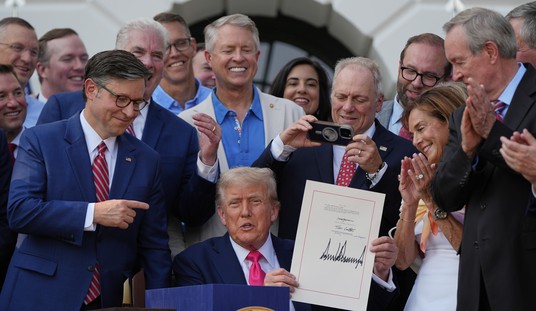Angelo de Codevilla, argued in mid-2017 that America was in a state of Cold Civil War from which he could see no easy exit. “So many on all sides have withdrawn consent from one another, as well as from republicanism as defined by the Constitution and as it was practiced until the mid-20th century, that it is difficult to imagine how the trust and sympathy necessary for good government might ever return. Instead, we have a cold civil war.”
Worse, he could not see how it could be rebuilt. America no longer had a set of common premises on which connections could be restored, as was once possible in the 1860s.
America is in the throes of revolution. The 2016 election and its aftermath reflect the distinction, difference, even enmity that has grown exponentially over the past quarter century between America’s ruling class and the rest of the country. During the Civil War, President Lincoln observed that all sides “pray[ed] to the same God.” They revered, though in clashing ways, the same founders and principles. None doubted that those on the other side were responsible human beings. Today, none of that holds. Our ruling class and their clients broadly view Biblical religion as the foundation of all that is wrong with the world.
The RAND Corporation called this divergence in understanding “truth decay”. RAND President Michael Rich wrote that “Truth Decay and the polarization that drives it are grave threats to America.” Unlike Codevilla, Rich thinks the problem could be fixed through reforms to education and journalism. Yet among the drivers of truthlessness that RAND identifies are things that cannot be fixed by simple changes notably:
- the rise of social media and other changes to the information environment
- demands on the educational system that limit its ability to keep up with changes in the information ecosystem
The effects of social media will be particularly hard to reverse because its divisive effects are rooted in its structure, in the small world network effect. Such networks generate hub-and-spoke configurations whose clustering effects now alarm us.
Small world effects are how the familiar (and divisive) polarities, tight crowds, brand clusters, community clusters, broadcast and support networks that collectively make up the landscape of 21st century divisions emerge. Cliques are part of the package. The dynamics of clique building are as old has history itself. The Paris salons of the 17th and 18th century were social networks before the term was invented. The salon movement even had virtual postal extensions which academicians have called the Republic of Letters. It was described by Stanford University in this way:
Before email, faculty meetings, international colloquia, and professional associations, the world of scholarship relied on its own networks: networks of correspondence that stretched across countries and continents; the social networks created by scientific academies; and the physical networks brought about by travel. These networks were the lifelines of learning, from the age of Erasmus to the age of Franklin. They facilitated the dissemination — and the criticism — of ideas, the spread of political news, as well as the circulation of people and objects.
But they supplemented, rather than replaced, the social connections of an ordinary kind. What distinguishes 21st century social networks from earlier iterations, apart from the sheer speed with which they can spread and the enormous extent to which they can grow, is the fact that social media links are no longer dependent on geography. Formerly people had to form connections with their physical neighbors, while today they can form them with anyone in the world, and sometimes with people who don’t exist at all, like AI chatbots. The path length (number of steps along the shortest paths for pairs of network nodes) between American elites and their counterparts in China can be shorter than with the cleaner working in the luxury apartment in which the American worthy lives.
Rajiv Vinnakota of the Aspen Institute points out that the engine that formerly drove the melting-pot has broken down, replaced by social media networks that are mass producing hyphenated identities.
In the past, ‘bridging social capital’ used to be more available and evenly established in America for two reasons. First, there were many more neighborhoods and communities that mixed people of different socioeconomic classes and backgrounds. Unlike in online interaction, there was no algorithm to make sure you didn’t see anyone who disagrees with you at the grocery store. Community members, by encountering each other in real life, built friendships and mutual respect and greater understanding. These relationships created the bridging social capital that binds us together and creates a sturdy social fabric.
The power of geographically based networks lay in the inescapable confluence of physical reality with perception. Geography forced people to perform a reality-check on their ideas. Today our newfound ability to generate entirely virtual communities runs the risk that people will live in increasingly segregated frameworks; in unchecked post-modern universes liberated from the constraints of objective reality where all cultures are equal, distant places are idealized and news is whatever you prefer to believe in.
These problems can’t be fixed by quick fixes to journalism and education. When Jim Acosta of CNN recently Tweeted “We are real news Mr. President,” it was met with derision outside of his small world network. That is to be expected. If you have to say you are the news, you ain’t.
Follow Wretchard on Twitter
For a list of books most frequently purchased by readers, visit my homepage.
Support the Belmont Club by purchasing from Amazon through the links below.
Books:
The Road Not Taken: Edward Lansdale and the American Tragedy in Vietnam, In this book, bestselling historian Max Boot chronicles the life of legendary CIA operative Edward Lansdale and reframes our understanding of the Vietnam War. Lansdale pioneered a “hearts and minds” diplomacy, first in the Philippines, then in Vietnam, a visionary policy that was ultimately crushed by America’s giant military bureaucracy. With interviews and newly available documents, Boot rescues Lansdale from historical ignominy and suggests that Vietnam could have been different had we only listened.
The Case for Christ: A Journalist’s Personal Investigation of the Evidence for Jesus, Retracing his own spiritual journey from atheism to faith, author Lee Strobel, former legal editor of the Chicago Tribune, cross-examines a dozen experts who are recognized authorities in their own fields. He challenges them with questions like, How reliable is the New Testament? Does evidence for Jesus exist outside the Bible? Is there any reason to believe the resurrection was an actual event? The book reads like a captivating, fast-paced novel but it’s not fiction. It’s a riveting quest for the truth about history’s most compelling figure.
Ghost Soldiers: The Epic Account of World War II’s Greatest Rescue Mission, by Hampton Sides. On January 28, 1945, 121 hand-selected U.S. troops slipped behind enemy lines in the Philippines. Their mission: March 30 rugged miles to rescue 513 POWs languishing in a hellish camp, among them the last survivors of the infamous Bataan Death March. This book vividly re-creates this daring raid, offering a minute-by-minute narration that unfolds alongside intimate portraits of the prisoners and their lives in the camp.
The Square and the Tower: Networks and Power, from the Freemasons to Facebook, by Niall Ferguson. The 21st century has been hailed as the Networked Age. But in this book, Ferguson argues that social networks are nothing new. From the printers and preachers who made the Reformation to the freemasons who led the American Revolution, it was the networkers who disrupted the old order of popes and kings. Far from being novel, our era is the Second Networked Age, with the computer in the role of the printing press. Once we understand this, both the past and the future start to look very different indeed. Ferguson offers a whole new way of imagining the world.
For a list of books most frequently purchased by readers, visit my homepage.
Did you know that you can purchase some of these books and pamphlets by Richard Fernandez and share them with your friends? They will receive a link in their email and it will automatically give them access to a Kindle reader on their smartphone, computer or even as a web-readable document.
The War of the Words, Understanding the crisis of the early 21st century in terms of information corruption in the financial, security and political spheres
Rebranding Christianity, or why the truth shall make you free
The Three Conjectures, reflections on terrorism and the nuclear age
Storming the Castle, why government should get small
No Way In at Amazon Kindle. Fiction. A flight into peril, flashbacks to underground action.
Storm Over the South China Sea, how China is restarting history in the Pacific
Tip Jar or Subscribe or Unsubscribe to the Belmont Club










Join the conversation as a VIP Member